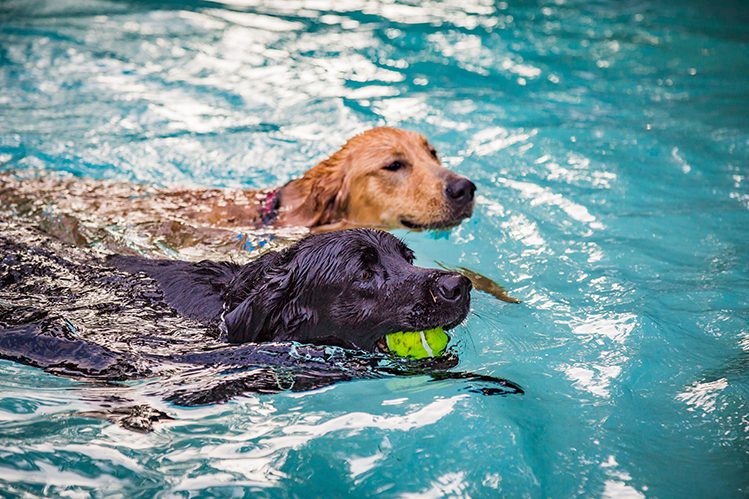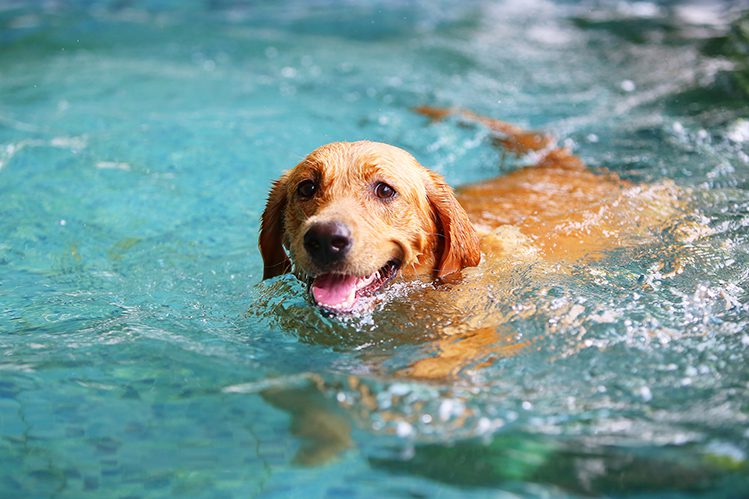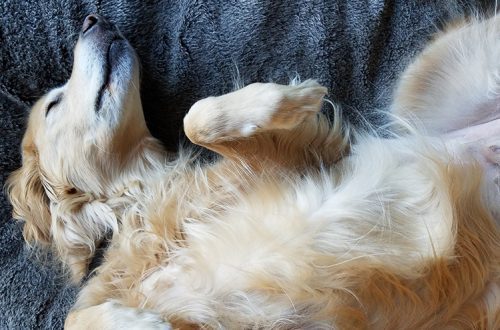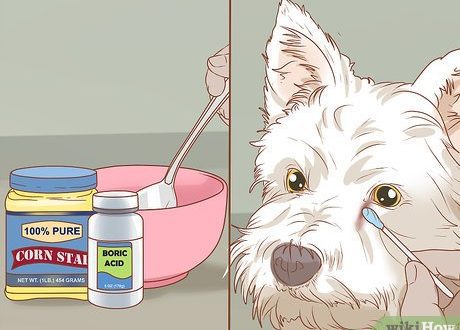
Why does a dog need a gym and a pool?
Until recently, gyms and pools for dogs were perceived as newfangled excesses. But it seems so only at first glance. In the rhythm of megacities, with the eternal lack of free time, the remoteness of walking areas and bad weather, special complexes for training dogs greatly simplify life. In our article, we will talk in more detail about the benefits of exercise machines and a pet pool and help you prepare for the first lesson.
A modern person spends a lot of time at the computer and in transport, and this is not good for health. To make up for the lack of movement and keep fit, we regularly visit fitness clubs. Now imagine our dogs. Nature ordered them to travel long distances daily and get food, but when kept in an apartment, they are forced to wait for the owners from work and be content with short walks within the city.
Many pets suffer from a lack of physical activity and, on this basis, have problems with overweight, the cardiovascular system and the musculoskeletal system. To combat these diseases, pools and gyms for dogs have been created. This is about the same as rehabilitation centers and fitness clubs for us.
Every dog needs active exercise for physical and psychological health.
Let’s list in more detail the tasks that modern gyms and pet pools solve.
Contents
Why do dogs need a gym and a pool?
- Maintaining physical fitness. When the owner has little free time, the weather is bad outside, or there is no walking area nearby, the gym or pool comes to the rescue. They have comfortable conditions all year round, they have everything you need to train with your pet, and you can always get advice from an instructor or other specialist. And also to communicate with dog breeders – like-minded people.
Even if you don’t have the opportunity to take your dog for long walks twice a day, training with an instructor will provide the level of exercise that is required specifically for your dog. Thanks to an individual training program, she will not have a lack of movement and the resulting health problems.
- Load on certain muscles. Special exercise machines and swimming help to engage muscles that are not involved in walking and running, and evenly distribute the load.
Swimming pools and gyms are used in the treatment of dogs with orthopedic, neurological, cardiovascular and other diseases, as well as in rehabilitation after therapy, surgery, childbirth and injuries.

- The fight against excess weight. A combination of diet and exercise helps to manage excess weight. Special areas for training with dogs allow – at any time convenient for the owner and despite the weather conditions – to provide the pet with an optimal load.
- Joint support. The pool allows you to provide the dog with a soft, reduced load for the development of the joints.
- Improved coordination. Veterinarians can prescribe swimming and exercise equipment for coordination problems.
- Preparing for the exhibition. If a dog is shown in the ring, regular pool or gym sessions will help it stay at its peak and get the highest marks.
- Help in education. It is a mistake to believe that the benefits of exercise are reflected only in the appearance of the dog. In the pool or gym, the pet moves a lot and splashes out the accumulated energy, which otherwise would be directed to damage your shoes.
- Fight stress, hyperactivity and aggression. Physical exercise helps to cope with stress not only for us, but also for our dogs. With regular exercise, pets often become calmer and more obedient.
- Maintaining immunity. Sport is a great way to strengthen the body’s defenses, reduce the manifestation of chronic diseases and reduce the risk of developing new ones.
Why is it safe?
- Safety standards are met in professional pools and dog gyms. There is everything for comfortable classes. The water in the pools is regularly replaced and the shells are disinfected.
- Only healthy, vaccinated pets are allowed to practice. Before class, a veterinarian or instructor examines the dog.
- Before visiting the pool, pets are washed in a special area.
- Classes are conducted by experienced instructors, guided by the individual characteristics of each pet.
In the gym and swimming pool, the owner can attend training or leave the dog with the instructor.

First workout: what you need to know?
So, you are going to the first lesson in the pool or gym. How to prepare? What to take with you?
You will need:
Veterinary passport with marks of vaccination and treatment against parasites. The last rabies vaccination should be carried out no more than 1 year ago, and deworming – once a quarter.
Direction of a veterinary specialist and research results. If a veterinarian has prescribed classes in the gym or swimming pool, you should definitely take your appointment and health data with you: the results of analyzes and studies, extracts from examinations and other information that will help the instructor develop an individual training program.
Take your dog to a cardiologist before the first training session. This is especially true for dogs over 6 years old.
Be sure to take your dog’s favorite toy with you: it will help to captivate your pet with play and relieve stress. For the pool, choose colorful waterfowl toys like the Kong Safestix fetch.
Treats are a must-have for workouts. With their help, you will stimulate and encourage the pet. It is best to bring special training treats with you, like mini-bones “Mnyams”. They come packaged in a handy container that fits easily into a treat bag or compact backpack.
Bathing and grooming products.
Before diving into the pool, the dog is washed with special products according to the type of coat: shampoo and conditioner. After bathing, the dog is rinsed, if necessary, shampoo and balm are reapplied and dried thoroughly. To quickly tidy up the coat after bathing, you can use a special combing spray.
Life hack! If your dog frequents the pool, treat the coat with ISB products before and after bathing to further protect the coat and skin from drying out. Mix a small amount of Iv San Bernard K101 and a few drops of Iv San Bernard Sil Plus with hot water and spray onto coat and skin as a spray. The result is guaranteed!

How to prepare for the lesson?
– Pack a bag with the necessary things in advance.
– Do not feed your pet 2-3 hours before training.
– Before class, walk the dog so that nothing bothers her during training.
As you can see, nothing complicated!
We hope your pet will enjoy the classes and there will be no lack of physical activity in his life.





